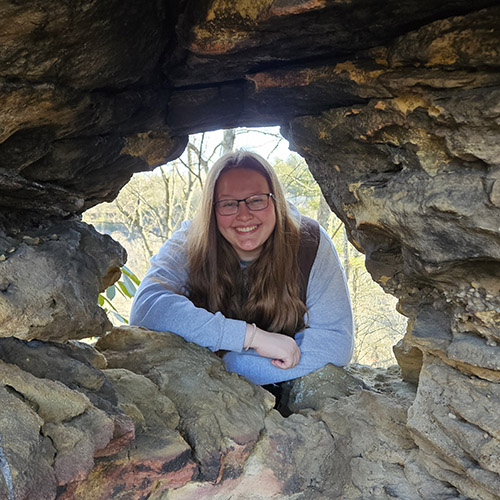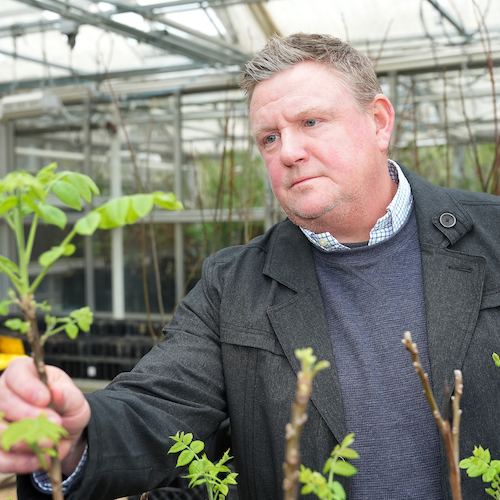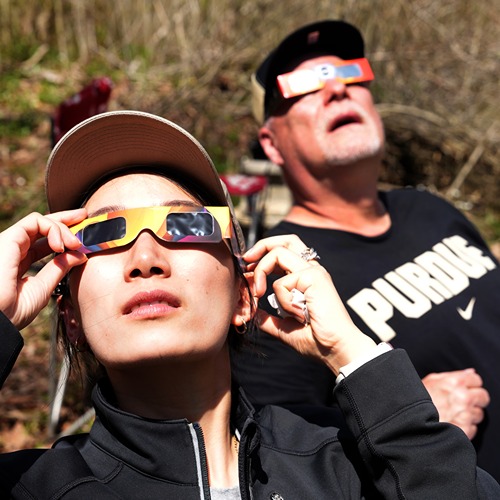The classic and trusted book "Fifty Common Trees of Indiana" by T.E. Shaw was published in 1956 as a user-friendly guide to local species. Nearly 70 years later, the publication has been updated through a joint effort by the Purdue Department of Forestry and Natural Resources, Indiana 4-H, and the Indiana Department of Natural Resources, and reintroduced as "An Introduction to Trees of Indiana."
A printed copy of the full publication is available for purchase for $7 in the Purdue Extension Education Store. The field guide helps identify common Indiana woodlot trees.
Each week, the Intro to Trees of Indiana web series will offer a sneak peek at one species from the book, paired with an ID That Tree video from Purdue Extension forester Lenny Farlee to help visualize each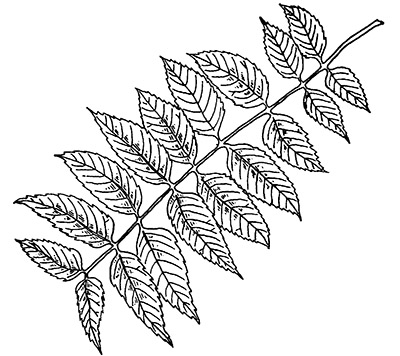 species as it stands in the woods. Threats to species health as well as also insight into the wood provided by the species, will be provided through additional resources as well as the Hardwoods of the Central Midwest exhibit of the Purdue Arboretum, if available.
species as it stands in the woods. Threats to species health as well as also insight into the wood provided by the species, will be provided through additional resources as well as the Hardwoods of the Central Midwest exhibit of the Purdue Arboretum, if available.
This week, we meet Black walnut or Juglans nigra.
Also known as American black walnut or eastern black walnut, this species has compound leaves with several pairs of leaflets along the individual leaf stems. The leaves, which are arranged alternately on the twigs, can be between one to two feet long. They are green in summer and turn yellow in the fall. The terminal and lateral buds are fuzzy and tan and can resemble suede.
The bark has long, strong running ridges and in older trees can resemble alligator hide. Under the surface of the bark is a dark, chocolate brown color.
Black walnut trees produce nuts, which are ridged and rounded with very heavy shells. Nuts are encased in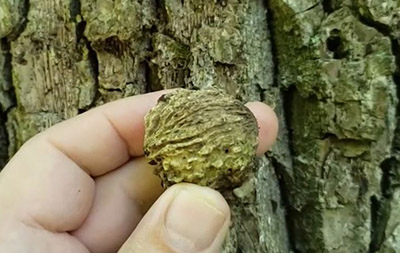 a thick yellow-green husk, which can leave a dark brown stain on skin. The nut shells require a heavy hammer hit or sharp animal teeth or claws to break open. The nut meat has a very strong aromatic flavor.
a thick yellow-green husk, which can leave a dark brown stain on skin. The nut shells require a heavy hammer hit or sharp animal teeth or claws to break open. The nut meat has a very strong aromatic flavor.
Black walnuts, which grow 50 to 75 feet tall, prefer to grow in sunshine and in high quality soils that are deep and well-drained. This species is often found as one of the tallest in the woodlands where they grow. The best quality trees are frequently found on flood free ledges just above stream banks. This species will live on poorer soils, but growth is slow and the wood quality is generally poor.
The natural range of the black walnut is the from the east coast west through the Great Plains. It ranges from Texas and Georgia north to central Minnesota, Wisconsin, Michigan and southern Ontario.
The Morton Arboretum warns that site selection should take into account that the tree produces a chemical that is toxic to some other plants. This species, however, is tolerant to alkaline and clay soil as well as occasional drought and road salt. It can be difficult to transplant due to a deep taproot. Black walnut should be pruned in the dormant season as it is a ‘bleeder,’ which will run sap from any of its wounds in the spring.
Black walnut is targeted by walnut and yellow leaf caterpillars. It is susceptible to anthracnose, which may lead to it losing its leaves in late summer. Thousand canker disease is a serious problem in some states, including Indiana.
Black walnut wood is good for shaping and is rated the best of any commercial hardwood species for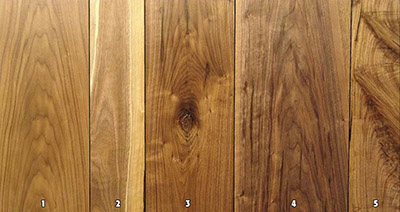 turning and boring. With a 12 percent moisture content, walnut weights 38 pounds per cubic foot, and it is a relatively strong wood for its intermediate weight.
turning and boring. With a 12 percent moisture content, walnut weights 38 pounds per cubic foot, and it is a relatively strong wood for its intermediate weight.
The wood from black walnut was once used for furniture, flooring, military and sporting gun stocks, construction purposes and barn wood because it had a natural resistance to decay and insects. It was also used for high end furniture and cabinets. Today, black walnut is very desirable and found in office furniture, architectural millwork, flooring, high-end gun stocks and other specialty products.
Other Resources:
ID That Tree: Black Walnut
Hardwoods of the Central Midwest: Black Walnut
Hardwood Lumber and Veneer Series: Black Walnut
Morton Arboretum: Black walnut
Thousand Cankers Disease: Indiana Walnut Trees Threatened, The Education Store
Facts About Black Walnut, The Education Store
Purdue Arboretum Explorer
The Woody Plant Seed Manual, U.S. Forest Service
Fifty Trees of the Midwest app for the iPhone, The Education Store
Native Trees of the Midwest, The Education Store
Shrubs and Woody Vines of Indiana and the Midwest, The Education Store
Investing in Indiana Woodlands, The Education Store
Forest Improvement Handbook, The Education Store
ID That Tree, Purdue Extension-Forestry & Natural Resources (FNR) YouTube playlist
Woodland Management Moment , Purdue Extension-FNR YouTube playlist
